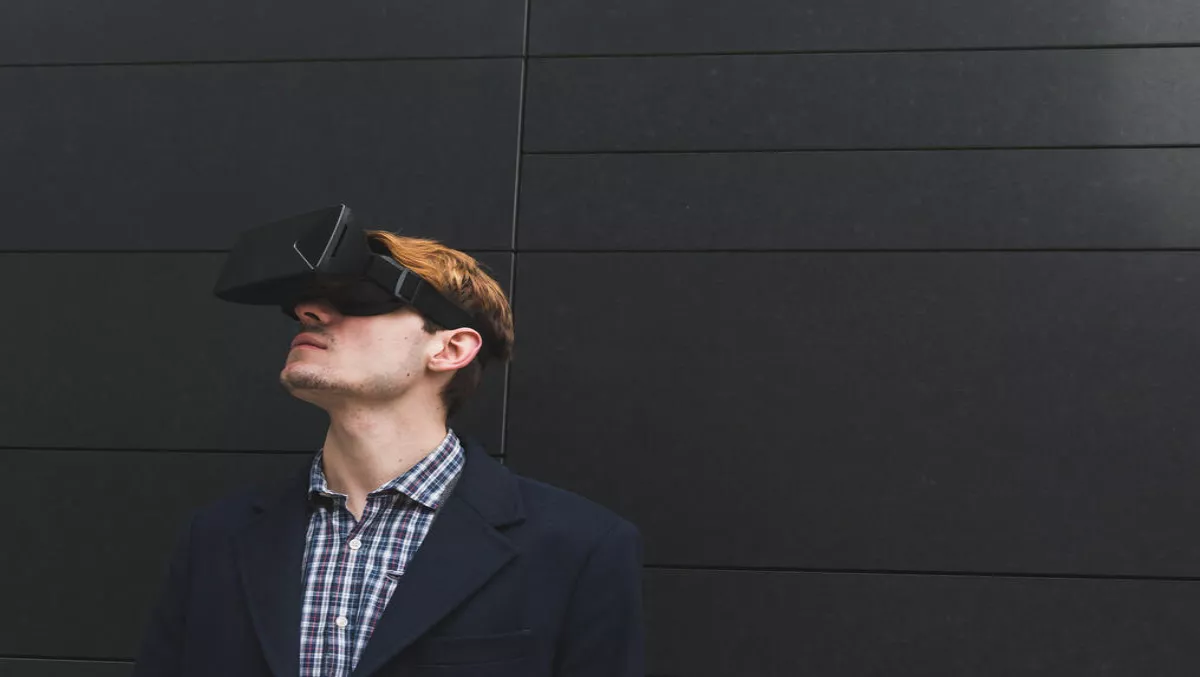
Virtual reality seems like it's been around awhile, and it has, in movies like “Minority Report” and “The Matrix” But that's fiction. In actual reality, virtual reality (VR) is only just beginning to show signs of the kind of pervasiveness movies have helped us imagine.
Estimates of the global VR market's size today range from $1 billion to $6 billion, but tomorrow is when industry experts envision things will really take off. SuperData, for example predicts a $40 billion VR market by 2020.
Meanwhile, Cisco projects virtual reality traffic will increase an astonishing 61-fold between 2015 and 2020, at a compound annual growth rate of 127%.
The growth is VR is both accelerating and exponential.
Are you not entertained?
It's worth distinguishing between virtual reality and augmented reality, which are often lumped together. Augmented reality overlays digital information on top of actual, physical surroundings (see Pokemon Go), while virtual reality immerses viewers in manufactured 3D surroundings. For this blog post, we're focused on VR.
Entertainment is currently viewed as the industry most likely to see the highest VR-related gains in the near term. For instance, in a 2016 survey of product developers by the design and development studio Yeti LLC, more respondents (84%) envisioned VR use accelerating over the next two years in entertainment than in any other industry. This year's Super Bowl, the first ever to have portions broadcast in VR, was part of that trend.
But Yeti survey respondents also envisioned significant near-term growth in a range of other sectors, with at least half predicting accelerated VR usage in industries including education, high tech, health care and travel. Here's just a few examples of what's growing and what's coming next for VR outside the world of entertainment:
Designing cars
Equinix customer Ford Motor Company uses virtual reality to help design new vehicles and develop technology for autonomous vehicles.
The company can create an entire vehicle in VR, right down to its seat mechanisms, and designers and engineers in different divisions and regions can work together on the same thing at the same time.
Ford says that besides improving collaboration, VR allows its teams to explore concepts that previously would have been too time-consuming or expensive to test.
Improving health
The potential VR applications in the health care industry are numerous and varied, ranging from training surgeons, to relieving pain. For instance, a company called Immersive Touch has developed a VR training simulation that places doctors in a digital operating environment, complete with surgical “tools” they can manipulate.
They can see and actually feel surgical procedures, so they can learn and improve techniques without risk. Another example is a simulation by Deepstream VR that puts people in a beautiful landscape with changing seasons to relax them and assist with pain relief. Users have described a 60%-70% reduction in pain, lasting as long as two days.
Renting Real Estate
Prospective renters at a yet-to-be-completed University of Minnesota apartment complex can visit the building in VR, immersing themselves in their potential future home as they contemplate whether to move in or not.
The technology allows users to virtually stand in a sample apartment and check out details of what's inside.
What VR needs
Any developing technology faces various hurdles on the way of broader adoption, and respondents in the Yeti survey named a few: “Lack of budget” stood as the top obstacle, and nearly 1-in-5 named “technological limitations” as another key issue.
Both are likely chronic issues, since processing and graphics demands are only going to accelerate as VR technology advances and consumer expectations grow. Companies recognize that they will have to pay to keep up.
But the cloud does offer solutions. The pay-as-you-go processing available through Infrastructure-as-a-Service (IaaS) providers is an excellent and cost-effective fit for integrating VR into IT infrastructures.
In addition, IaaS and Data-as-a-Service providers offer the sophisticated graphics processing capabilities VR technology needs.
At Equinix, we have dense ecosystems of VR solutions, cloud providers and network providers. We've also designed an interconnection-first approach, called an Interconnection Oriented Architecture (IOA), that can help companies deliver the consistent, high-performance, low-latency connectivity required for virtual reality to work as it should.
An IOA is a repeatable and customizable model which brings people, locations, clouds and data closer together for superior performance, right out at the edge of the corporate network – where virtual reality operates.
An IOA is needed because legacy networks or the public internet just aren't optimal for VR – there's too much risk of bottlenecks and traffic clogs that can degrade performance.
Direct, secure, high-speed interconnection to hybrid cloud environments is the way to ensure the essential level of performance for VR applications.
Article by Jim Poole, Equinix blog network